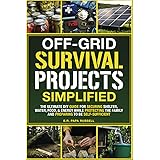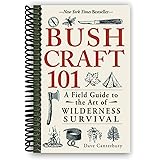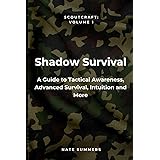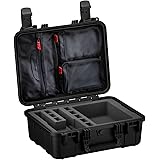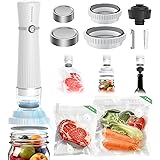Imagine finding yourself unexpectedly stranded, the modern conveniences you rely on suddenly out of reach. Perhaps a camping trip took an unforeseen turn, or you encountered an emergency far from civilization. In such moments, your ability to improvise and adapt becomes your most valuable asset. The video above masterfully demonstrates 21 ingenious survival hacks that can truly work anywhere, transforming ordinary items into life-saving tools.
This comprehensive guide delves deeper into these ultimate survival hacks, providing additional context and insights beyond what the video visually presents. We explore the principles behind these techniques, ensuring you not only see them in action but also understand why they are effective. Mastering these essential survival techniques can provide confidence and competence in challenging outdoor situations.
Mastering Fire Starting: Essential Survival Techniques
Fire remains a cornerstone of survival, offering warmth, light, cooking capabilities, and water purification. The video illustrates several compelling fire-starting methods, emphasizing resourcefulness with readily available materials. Understanding these diverse approaches can significantly boost your wilderness preparedness.
Chemical Fire Starters: Potent Reactions for Rapid Ignition
One of the most remarkable demonstrations in the video involves chemical reactions to produce fire. Potassium permanganate (KMnO4) mixed with sugar, and then with glycerin, creates incredibly potent incendiary agents. These reactions generate significant heat and can ignite tinder quickly, making them vital survival tools.
Potassium permanganate, a powerful oxidizer, reacts exothermically with reducing agents like sugar or glycerin. When a small amount of sugar is ground with potassium permanganate and then a few drops of glycerin are added, the reaction generates enough heat to cause spontaneous combustion. Survivalists often carry small quantities of these chemicals due to their reliability and compact nature.
Always exercise extreme caution when handling these substances, as the reactions are very rapid and intense. It is crucial to practice in a controlled environment to understand their properties before relying on them in an emergency. Safety considerations include wearing protective eyewear and ensuring proper ventilation during any experimentation.
Friction Fire Starting: Timeless and Effective Methods
The video briefly showcases a classic ferro rod and striker, a staple in many survival kits. This method relies on generating sparks that can ignite fine tinder. The principle involves scraping a hard, sharp edge against the ferro rod, producing hot sparks that reach temperatures of over 3,000 degrees Fahrenheit.
Magnesium shavings, often found attached to ferro rods, can serve as excellent tinder. Scraping magnesium produces fine, combustible dust that ignites easily from a spark, creating a brief but intense flame. This flame can then be used to ignite larger, more sustained tinder, like char cloth or finely shredded bark.
Improvised Fire Lighters: Ingenuity in Action
Beyond traditional methods, the video highlights several ingenious improvised fire lighters. For instance, using a plastic bottle filled with water as a lens can concentrate sunlight to ignite tinder, demonstrating the power of optics in survival. This technique requires bright sunlight and steady hands, but it conserves other fire-starting resources.
Furthermore, repurposing everyday items like an old tin can or even a piece of gum wrapper can provide unexpected fire-starting solutions. The video demonstrates how modifying these items can create effective wind shelters for flames or concentrate heat. Such resourcefulness epitomizes effective survival strategy, emphasizing adaptability with common waste products.
Ensuring Safe Water: Purification and Collection Techniques
Access to safe drinking water is paramount for survival. Dehydration can quickly incapacitate an individual, making water purification a top priority. The video provides compelling visuals of various water purification methods, reinforcing their critical importance.
Boiling Water: The Universal Purifier
Boiling remains the most reliable method for purifying water, effectively killing most bacteria, viruses, and protozoa. The video shows water being boiled in various containers, including glass, paper, and plastic. While glass and metal are ideal, the demonstration effectively shows how even a paper cup can boil water over a fire if handled correctly and carefully.
When using makeshift containers, such as a paper cup or a plastic bottle for boiling, ensure the flame only heats the water inside. The water absorbs heat, preventing the container from reaching its ignition or melting point too quickly. A robust fire is essential for bringing water to a rolling boil, which should be maintained for at least one minute at sea level. At higher altitudes, boiling for three minutes is recommended due to lower boiling temperatures.
Improvised Water Filters and Containers
While boiling purifies water from pathogens, filtration removes larger particulate matter. The video showcases simple methods for collecting and holding water using readily available items. Transforming a soda can into a makeshift cooking pot or water container offers a practical solution when traditional gear is unavailable.
Creating a simple gravity filter using layers of cloth, sand, and charcoal can remove sediment, improving water’s clarity before boiling. While not a purification method on its own, it significantly enhances the boiling process by eliminating murky particles. Survival experts often recommend a multi-stage approach for optimal water safety.
Improvised Survival Tools and Essential Gear
True survival often hinges on your ability to improvise tools from your surroundings. The video is replete with examples of transforming mundane objects into highly functional survival gear. This ingenuity demonstrates the core principle of bushcraft: utilizing what you have to meet your needs.
Crafting Makeshift Lighting and Warmth
In a dark environment, light is crucial for navigation, performing tasks, and psychological comfort. The video demonstrates creating various improvised lights, including simple oil lamps from cans and everyday oils like sunflower oil, mixed with rock salt. This combination produces a clean-burning fuel for an extended period, offering a steady light source.
Creating a wick from cotton cloth or rope, then soaking it in the oil mixture, allows for a controlled flame. Such improvised lighting solutions are incredibly valuable, particularly when commercial light sources fail or batteries run out. These resourceful methods can provide hours of illumination and a small amount of warmth.
DIY Char Cloth for Superior Fire Starting
One of the most practical hacks shown is making char cloth from cotton fabric. Char cloth is essentially cotton that has been heated in an oxygen-deprived environment, turning it into pure carbon. This material has an extremely low ignition temperature, allowing it to catch a spark from a ferro rod or flint and steel, and then smolder effectively.
To create char cloth, place small pieces of natural cotton fabric into a sealed tin can with a small hole poked in the lid. The video clearly illustrates this process, noting that “In 10 minutes jar will cool,” indicating the time needed for the material to carbonize and the container to be safe to handle. Heating the can over a fire until smoke stops escaping from the hole signals the completion of the charring process. Once cooled, the char cloth is ready to use, providing a reliable and efficient tinder source for subsequent survival hacks.
Practical Cutting and Crafting Solutions
The video demonstrates converting a simple soda can into a functional fishing lure or even a rudimentary cutting tool. This highlights the importance of seeing beyond an object’s intended purpose. Sharpening the edge of a can can provide a basic cutting surface for minor tasks, while its reflective properties can attract fish.
Moreover, the use of basic tools like a knife for carving wood is repeatedly shown. Crafting wooden stakes, spears, or even simple friction fire components from raw wood is a foundational bushcraft skill. These skills are enhanced by understanding how to utilize waste materials creatively.
Beyond the Basics: Advanced Resourcefulness
The array of ultimate survival hacks presented in the video transcends simple solutions, venturing into more advanced yet accessible techniques. These methods require a keen eye for detail and a willingness to experiment with available resources. Such comprehensive wilderness survival strategies empower individuals to confront unexpected challenges.
Chemical Igniters Revisited: Glycerin and Potassium Permanganate
A second, equally impressive chemical fire-starting method demonstrated combines potassium permanganate with glycerin. This reaction is notably more vigorous and faster than the sugar variant. A small quantity of glycerin dripped onto a pile of potassium permanganate will react almost immediately, generating intense heat and fire.
This method is highly effective even in damp conditions, where traditional friction-based fire starting might prove challenging. However, because of its rapid and intense nature, it demands careful handling and prior practice in a safe environment. Understanding the properties of these chemicals can provide a reliable emergency fire source.
Innovative Lighters from Household Items
The video showcases a truly ingenious method for creating a field-expedient lighter from a common disposable lighter and some household items. By prying open a lighter, retrieving the cotton packing and flint wheel, and then combining it with a fuel source like lighter fluid or even some alcohol, a functional fire starter can be assembled. This truly exemplifies the spirit of ultimate survival hacks.
This kind of improvisation is crucial when your primary gear fails or runs out. It underscores the value of disassembling and repurposing items to meet immediate needs. The ability to create a spark and a flame from seemingly discarded materials can be a game-changer in a survival scenario, offering invaluable assistance.


